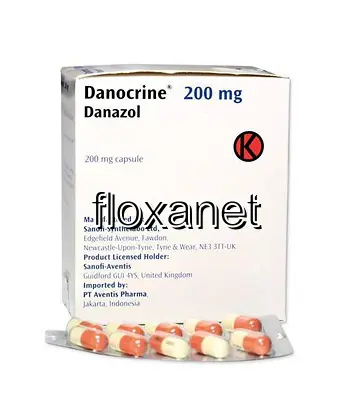| Package | Dosage | Price | Price per Dose | |
|---|---|---|---|---|
| Dosage: 50mg | ||||
| 360 pill | 50mg | $630.14 | $1.75 | |
| 180 pill | 50mg | $317.84 | $1.76 | |
| 120 pill | 50mg | $213.74 | $1.78 | |
| 90 pill | 50mg | $163.77 | $1.82 | |
| 60 pill | 50mg | $112.41 | $1.87 | |
| 30 pill | 50mg | $59.67 | $2.00 | |
| Dosage: 100mg | ||||
| 180 pill | 100mg | $649.57 | $3.61 | |
| 120 pill | 100mg | $438.59 | $3.65 | |
| 90 pill | 100mg | $331.72 | $3.68 | |
| 60 pill | 100mg | $223.45 | $3.72 | |
| 30 pill | 100mg | $113.80 | $3.78 | |
| Dosage: 200mg | ||||
| 120 pill | 200mg | $574.62 | $4.79 | |
| 90 pill | 200mg | $437.21 | $4.86 | |
| 60 pill | 200mg | $316.45 | $5.27 | |
| 30 pill | 200mg | $163.77 | $5.44 | |

Danazol Description
Overview of Danazol
Danazol is a synthetic steroid derived from testosterone. It is commonly used in the treatment of various medical conditions, primarily those related to hormonal imbalances. The medication functions by modulating the activity of hormones in the body, particularly reducing the production of certain pituitary hormones. This mechanism helps in managing disorders that involve abnormal tissue growth or hormonal excess.
Medical Uses of Danazol
One of the primary applications of Danazol is in the treatment of endometriosis, a condition where tissue similar to the uterine lining grows outside the uterus. It helps alleviate pain and reduce lesion size by suppressing ovarian function. Additionally, Danazol is used to treat hereditary angioedema, a condition characterized by recurrent swelling, by decreasing the frequency and severity of attacks. It may also be prescribed for fibrocystic breast disease, certain types of anemia, and some cases of infertility related to hormonal issues.
How Danazol Works
Danazol works by exerting weak androgenic effects, which suppress the secretion of gonadotropins. This suppression leads to a decrease in estrogen production, creating an environment that inhibits the growth of endometrial tissue or prevents hormone-driven swelling. Its ability to block hormone activity makes it effective in controlling symptoms caused by excess hormones or abnormal tissue growth.
Potential Benefits and Effectiveness
Patients who use Danazol often notice significant improvements in their symptoms. For example, women with endometriosis may experience reduced pain and improved fertility outcomes. Those with hereditary angioedema often report fewer swelling episodes. The medication's effectiveness depends on the specific condition being treated and the dosage prescribed by a healthcare provider. Regular monitoring can help maximize benefits while minimizing side effects.
Possible Side Effects and Risks
Despite its benefits, Danazol can cause a range of side effects. Common issues include weight gain, acne, oily skin, and hair growth on unwanted areas. Some users might experience changes in menstrual cycles or menstrual suppression. Because it is a steroid, long-term use may lead to hormonal imbalance or liver function impairment. Less common but serious risks include mood swings, depression, and liver toxicity. It is crucial to discuss medical history thoroughly with a healthcare provider before starting Danazol.
Usage and Dosage Considerations
The dosage of Danazol varies depending on the condition being treated, the patient's age, and their response to therapy. It is generally taken orally once or twice a day. Patients should follow their healthcare provider's instructions strictly and not alter their dose without consultation. Regular medical check-ups and blood tests are recommended to monitor for adverse effects, especially when used over extended periods.
Conclusion
Overall, Danazol is an effective medication for specific hormonal and tissue growth disorders. It offers significant relief for many patients but also comes with potential side effects that require careful management. Proper medical supervision is essential to ensure safe and optimal use of Danazol, maximizing its therapeutic benefits while minimizing any risks involved. Patients should always weigh the advantages against possible adverse effects and discuss all concerns with their healthcare provider before beginning treatment.
